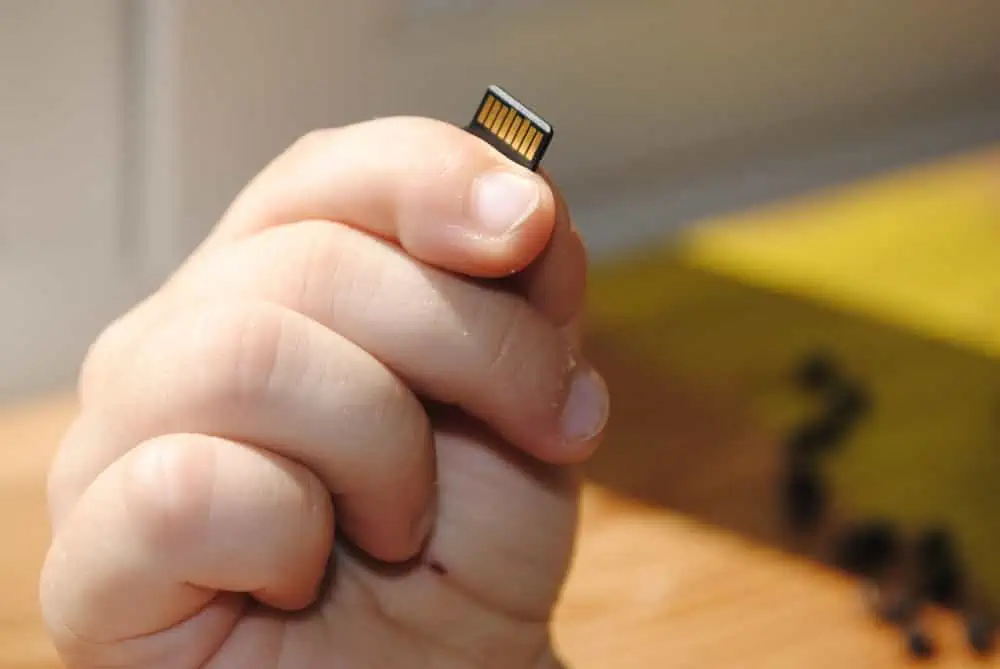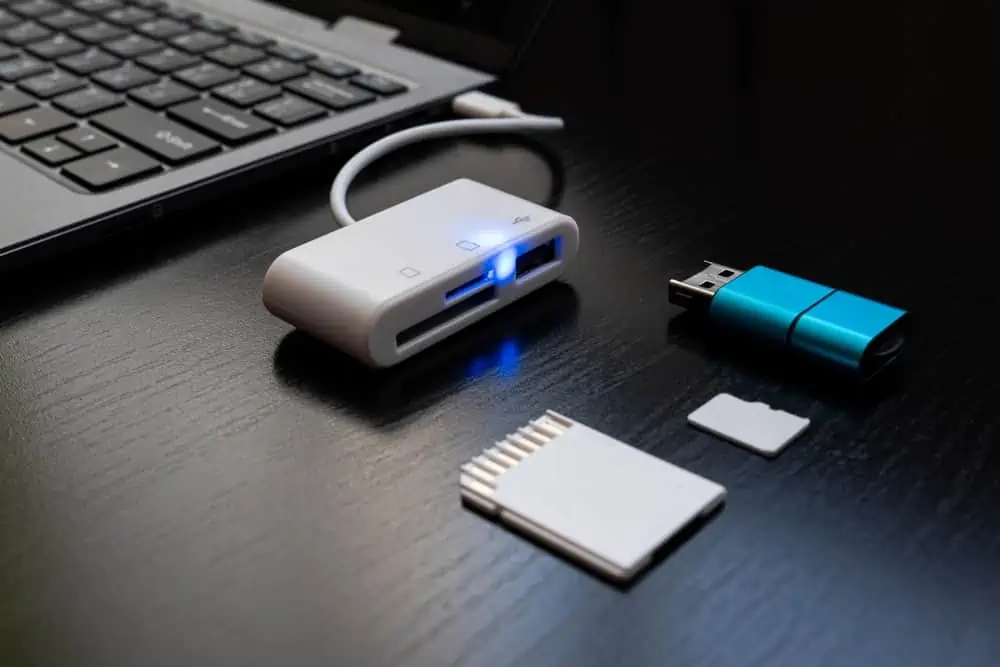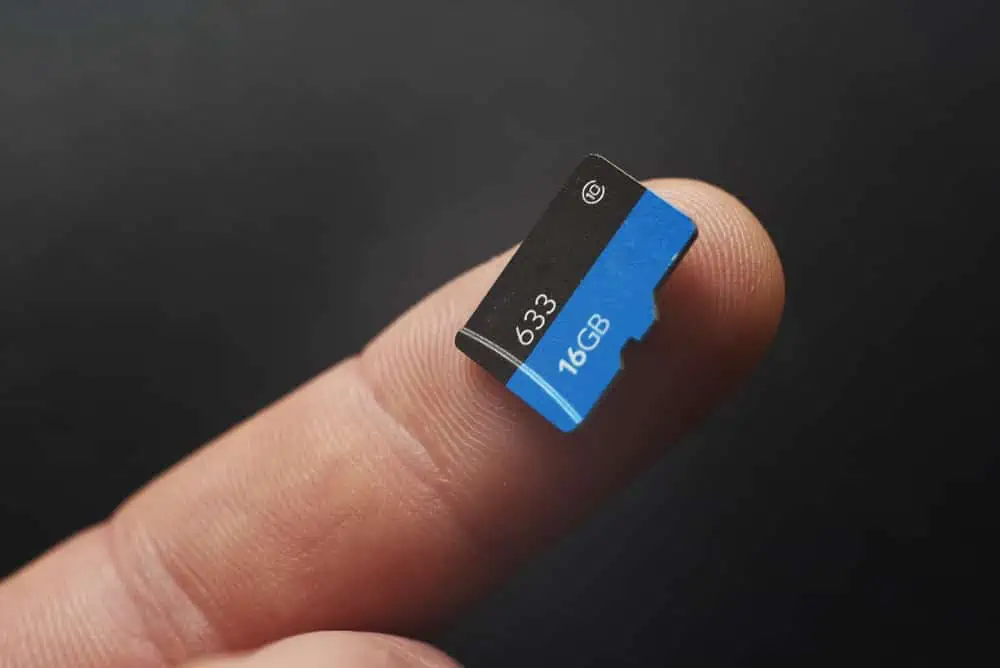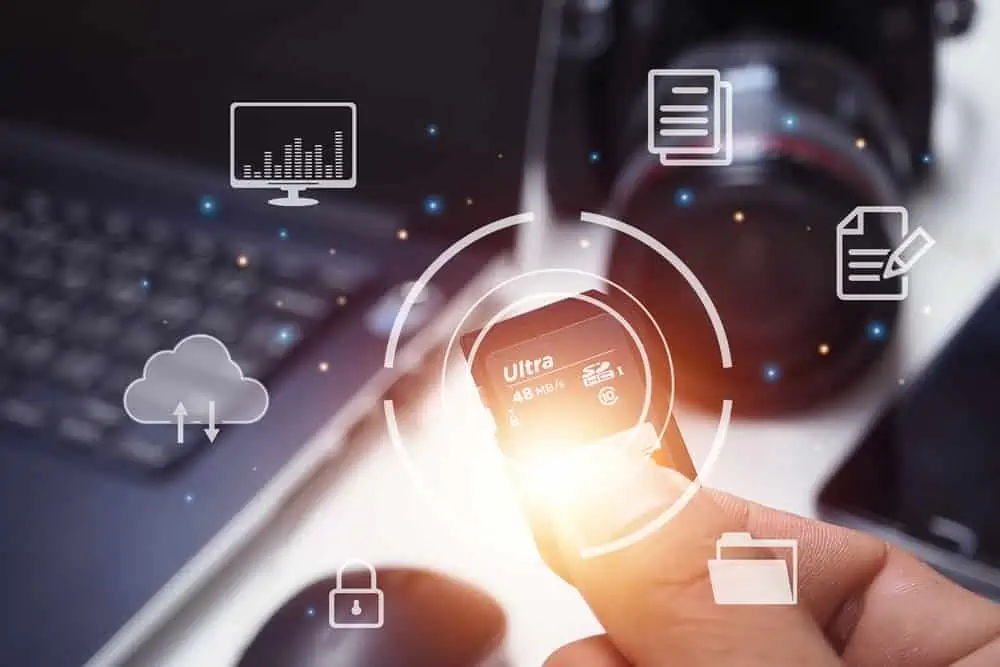Wondering what an external hard drive is and how it works? Follow me through this eye-opening article to learn everything about this storage technology.
Overview
To begin with, an external hard drive could be a Hard Disk Drive, a Solid-State Drive, or a Solid-State Hybrid Drive. However, one thing is certain – such a storage device is not fixed inside the computer that uses it.
Rather than being inside the computer, an external drive is connected to the computer externally via one of its ports. No wonder it is called an “external” hard drive because external means outside.
So, how does an external hard drive connect to a computer from the outside? Well, an external drive can be connected to a computer via a USB, FireWire, or eSATA.
Furthermore, external hard drives vary in storage capacity, with most of them offering up to 1 TB of storage space. Also, they are mostly portable, that’s why people sometimes refer to them as portable hard drives or mobile hard drives.
They are also known as removable hard drives, considering the fact that they can easily be disconnected from a computer. Besides, people mostly use external hard drives as supplemental storage.
In other words, we use them as an addition to the storage drive that is already on our computer. Having said all that, let us move on to the section below to learn how an external hard drive works.
How Does an External Hard Drive Work?
As stated in the section above, an external hard drive can either be an HDD, SSD, or SSHD. Hence, it literally works the same way an HDD, SSD, or SSHD works.
In essence, if your external hard drive is an HDD, it will operate exactly like an HDD. Likewise, if it is an SSD, it will work just like an SSD.
However, the mode of connection is what differentiates an external hard drive from a regular internal HDD, SSD, or SSHD. Fundamentally, using an external hard drive is as easy as plugging one end of the data cable into the drive and the matching end on the computer.
For example, to connect a USB external drive to a computer, you connect the USB drive to the computer’s USB port. Most times, the computer powers the external drive via the data cable, which also serves as the power cable.
Hence, when you connect an external drive to a powered-on computer, it automatically appears on the computer’s screen. In most cases, it takes just a few seconds for the external drive to appear on a computer’s screen.
At this point, you can easily begin to save files on the external drive or extract files from it. Sometimes, the external drive might not automatically appear on your computer screen due to some settings after a successful connection.
You can easily access the external drive from Windows File Explorer if that’s the case. The drive will appear as a second storage drive on your computer alongside the internal storage drive.
Hence, once you open it, you will be able to retrieve/send files from/to it. Now that we know how an external hard drive works, let us examine some of its features in the subsequent section below.
Features of an External Hard Drive
In the previous sections, we discussed what an external hard drive is all about and how it works. However, in this section, we will look at some of the major features of this storage technology.
It Can be an HDD or SSD
An external hard drive can either be an HDD (Hard Disk Drive) or SSD (Solid State Drive). As a matter of fact, it can be an SSHD (Solid State Hybrid Drive).
Besides, an external hard drive operates either like an HDD, SSD, or SSHD. Essentially, if your external hard drive is an SSD, it will have the speed of and work exactly like an SSD.
It is Connected to a Device Externally
As the name suggests, an external hard drive is connected to a computer from the outside. Additionally, it is connected to a computer via USB, FireWire, or eSATA.
As a matter of fact, there are some external hard drives that can connect to a device wirelessly.
An External Drive can Store Various Kinds of Data
An external hard drive isn’t limited to a certain kind of data. It is capable of storing different kinds of data ranging from documents to images.
In actual fact, you can save high-definition or even 4K videos on an external hard drive. Also, you can store applications and installation software on this storage technology.
It is Mostly Used as Supplemental or Backup Storage
People mostly use an external hard drive as an addition to the storage drive already on their computer. For example, if you have a large number of files that are slowing down your computer, you can store them on your external hard drive instead.
This frees up your computer’s storage space for newer files and makes the computer perform faster.
It Varies in Storage Capacity
As with internal hard drives, external hard drives come in different storage capacities. Hence, choosing a particular external hard drive sometimes depends on the number of things you plan to store.
Pros Of An External Hard Drive
It is Easy to Use
Using an external hard drive is very easy. All you need to do is connect it to the computer, and you are good to go.
It is Great for Moving Files from One Computer to Another
Regardless of the operating system, an external hard drive works on every computer. Hence, it is an ideal means of moving data from one computer to another.
It is Lightweight and Portable
Most externaI hard drives nowadays are portable and lightweight.
Due to this, you can easily carry them around with ease. Also, you can throw them inside your backpack and take them with you no matter where you are traveling.
As a matter of fact, some external hard drives are small enough to fit into your pocket.
It is Ideal for Backing Up Files
You can use an externaI hard drive as an emergency backup drive. Hence, if your computer’s internal storage drive eventually crashes, you can simply recover your files from this storage technology.
It is Good for a Hardcore Gamer and Improves Gaming
Modern PC games are massive in graphical detail, meaning they consume a huge amount of space on your computer.
Hence, if you’re a hardcore PC gamer, there is a fair chance your computer will get overstuffed with games. In fact, your computer’s internal storage drive might run out of space, and you won’t be able to install more games.
If that’s the case, you may get an externaI hard drive to store more games. Also, remember that your computer won’t perform as smoothly if you’re running low on storage space.
Thus, saving some of your games on an external hard drive could significantly boost your gaming experience.
Cons of an External Hard Drive
They are Prone to Theft
Because external hard drives are mostly small and lightweight, they can easily be stolen or even misplaced.
Sadly, when that happens, there is no way to retrieve the files saved on the drive.
Accidental Interruption During File Transfer
You may accidentally shake or disconnect the data cable when transferring data from an externaI hard drive to a computer. This can cause the data in transit to get corrupted.
It Can Easily Get Faulty
Most, if not all, external hard drives need to be handled with care.
Hence, we can consider them very fragile. Therefore, if you don’t have a casing to protect this storage technology from bumps and shakes, you can unintentionally get it faulty.
They May be Prone to Overheating
Internal hard drives are usually installed to allow the computer’s cooling system to cool them off during operation.
However, that’s impossible in the case of an externaI hard drive, considering the fact that they are outside the computer. Hence, this storage technology is likely to overheat under heavy usage or when used in sunny areas.
Frequently Asked Questions
An externaI drive is a portable storage device that is connected to a computer from the outside or externally. Furthermore, you can connect it to a computer via USB, FireWire, eSATA, or even wirelessly.
No, it isn’t. Your externaI drive might fail sooner than it is supposed to if you constantly plug it in.
In order to avoid such issues, make sure you unplug your external drive whenever it is not in use.
There are several externaI hard drive options on the market, so there is something to suit everyone’s demands. However, below are some of the things you should consider when purchasing an externaI drive.
a) Your budget
b) The storage capacity of the drive
c) Size of the drive
d) Warranty
e) The drive’s transfer speed and connectivity
f) The type of drive
g) Manufacturer of the drive
Hard drives typically last up to five years on average. However, if you handle them carefully and do not use them regularly, a hard drive should be able to last up to ten years.
The average lifespan for an externaI hard drive is around three to five years. However, that depends on the manufacturer, model, and how frequently you use the drive.
Below is a list of reliable externaI hard drive brands you will find in the market today.
a) WD Elements Portable Drive
b) Seagate Portable Drive
c) Maxone 500GB Ultra Slim Drive
d) Toshiba Canvio Basics Portable Drive
e) Silicon Power Portable Drive
f) LaCie Rugged Mini Drive
g) SanDisk Extreme Portable External SSD
A storage space of two terabytes can hold approximately 200,000 12 MP photos.
Absolutely! An externaI hard drive makes it easy and seamless for users to move data from one device to another.
Also, it can be used as secondary storage.
Yeah sure. Regardless of the operating system or model, an externaI hard drive works on any kind of laptop.
1 TB is equal to 1,000 gigabytes (GBs). However, when the binary standard is involved, 1 TB is equal to 1,024 GB.
Conclusion
External hard drives are portable, user-friendly devices that can offer immediate storage whenever you need it. In addition to that, they are connected to a device from the outside via USB, FireWire, eSATA, or even wirelessly.
Moreover, an external hard drive can either be an SSD, HDD, or SSHD. Also, it is ideal for transferring data from one device to another as well as for secondary/backup storage.
Besides, externaI hard drives are capable of storing various kinds of data, including images, documents, and videos. However, their portability makes them prone to theft and can easily get faulty.
I hope I was able to explain everything about an externaI hard drive comprehensively. I also hope that you found this article helpful and easy to understand.
If you found this article helpful, click on “Yes” beside the “Was this page helpful” question below. You may also express your thoughts and opinions by using the “Leave a Comment” form at the bottom of this page.
Finally, you may find other helpful articles on our Storage & Disk Technology Explained page.



